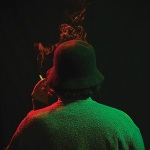For those of you in Tokyo tomorrow (Saturday, February 13th), I recently did an interview with Ella Krivanek and Dorothy Siemens, who have put on this fascinating looking free art and music event at an abandoned bathhouse. The event features Melt-Banana and Hikashu, who are two of the best bands in Japan, as well as relative newcomers The Fin and The Boys Age, so get on down there early and check it out.
Here’s the interview in The Japan Times, so please check that out.
Because of the limited space, there was a lot of fascinating stuff that I just couldn’t include. Obviously as a music writer, the musical aspect of the event was the angle that I approach this from, although the event is clearly designed so that the art and music interact conceptually in various ways. As the person in charge of the music, I was particularly interested in some of what Siemens explained about how the music functions as art and how the borders artforms can be crossed, subverted or blurred.
“I was interested in getting bands that bridged a certain gap between art and music,” Siemens explained, “Koichi Makigami from Hikashu also works as a sound artist, and Melt-Banana have broken a lot of barriers – there’s a juxtaposition there in the whole descriptor of ‘noise music.’ Meanwhile Boys Age make music out of their bedroom – it’s very DIY and it’s very immediate.”
In the context of my travels around Japan and my interest in the relationship between music and the place in which it happens, this event touched on a lot of themes that I find interesting as well. I remarked on the way smaller towns and more remote areas push different kinds of stuff together that would never usually interact in Tokyo, and how this often leads to more interesting, unexpected or imaginative work as a virtue of necessity.
“The most exciting projects have taken place outside Tokyo,” agreed Krivanek, “There’s a side of it that says because there aren’t as many spaces, people have to make do with sharing space, but the other side is that they have the opportunity to do that because space isn’t nearly at such a premium, so you can rent physically bigger buildings. And people who are slightly weird in the countryside are drawn to one another regardless of whether they’re all fine artists or all musicians or whatever.”
There is also a sense that through this approach, it might be possible to point a way towards a new way of thinking about and doing music and art in Tokyo as well. In the music scene especially, I get the impression that some of the structures, like the live house system, are fraying at the edges, with people increasingly looking to alternative spaces to perform.
“There’s a need to look at new ways of doing things and beak out of these rigid structures of ‘this is how you become an artist or a musician’,” explained Siemens, “There are people who get sponsorship from galleries or sign to a major label, but that’s not the majority of people. It’s an opportunity to start a discussion in Tokyo about how we can do this in a new way, how we can create a new community of artists and musicians that support each other here in Tokyo.”
As Krivanek adds, “In terms of an intersection between fine art and music, I don’t think either that’s a new thing or something to be afraid of.”
This also brought to mind one of my pet concerns about music, which is the way that as it loses its value as a commercial product, it increasingly seems to be becoming subservient to lifestyle accessories and fashion, when really it deserves respect and consideration as an art in its own right. Perhaps aware of the near-Satanic position that one particular kind of goods holds in Call And Response Records demonology, this point kicked off a little exchange that made me chuckle:
SIEMENS: “There are so many of these lifestyle-branded bands that come with the pins, the t-shirts, the mechandise…”
KRIVANEK: “The tote bags!”
SIEMENS: “We have this opportunity to pull music back into this conversation of exploring it as a fine art”
All of which I absolutely agree with (even if they were taking the piss out of my irrational disdain for poor, innocent tote bags a bit).
Another related point we discussed was the way they decided to keep enough of a separation between between the musicians and fine artists, so that each has the space to be considered in their own right rather than as simply a soundtrack to the art or a visual accompaniment to the music. However, Krivanek and Siemens are intrigued by the possibilities this juxtaposition might open up in terms of what visitors take with them from the music into the art and vice versa when travelling between areas. In any case, like I say, if you get a chance, check out the show.
The event page on Facebook is here, or on Tokyo Gig Guide here.


